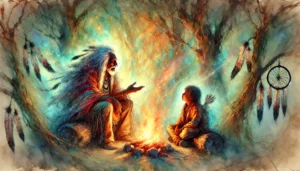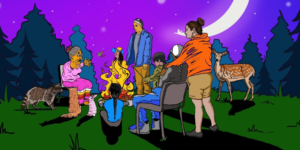
The Four Sacred Medicines
The Voices of Our Ancestors The Four Sacred MedicinesThe origins of Native American healing practice and ceremony are as diverse and rich as each of the hundreds of American tribes

Powwows are vibrant, exciting celebration of Native American culture. Pow wows offer a chance for different tribes and local communities to come together and honor traditions through music, dance, and sharing of stories. These gatherings are both social and spiritual events, deeply rooted our indigenous heritage. If it is your first time attending a Powwow, understanding and respecting proper powwow etiquette is essential to preserving the sacredness of this cultural tradition. Below is a guide to help you respectfully and fully enjoy the experience.
The MC is responsible for directing the flow of activities during the powwow. They’ll inform attendees about when dances begin, who is allowed to join certain dances, and any other important moments throughout the event. Always pay close attention to their announcements. MC will make announcements like, when non ceremonialist dressed individuals can join for which segments.
Seating is often structured in a circular formation around the dance arena. While you’re welcome to bring your own chairs, be mindful of reserved spaces.
While it’s understandable to want to capture the beauty of the dances and regalia, always ask for permission before photographing or recording.
The intricate regalia worn by dancers is a symbol of tradition, creativity, and personal pride. Each piece often holds historical and familial meaning.
Eagle feathers are among the most sacred items in Native tradition. An eagle losing or dropping a feather is rare and significant event.
The drum is the heartbeat of the powwow, and the area around it is a sacred space.
During specific moment, such as the Grand Entry, Flag Songs, Veterans Songs, and the Closing Son, everyone is expected to stand as a sign of respect.
While spectators may not wear regalia, there are opportunities to participate in social dances. Look out for announcements such as Inter-Tribal Songs or Blanket Dances, where everyone is welcome.
Powwows are family-friendly, sacred spaces, and the presence of alcohol or drugs is strictly forbidden.
Native cultures emphasize a deep respect for nature. Always ensure your trash is placed in designated bins. Keeping the grounds clean honors the space and those around you.
Powwows are joyful yet deeply meaningful gatherings, where Native communities share their rich heritage with participants and spectators. By adhering to these etiquette guidelines, you ensure the integrity of these events is preserved while enriching your own experience. Show your appreciation by respecting the rules, ask questions if you are feeling unsure about something, and engage in the spirit of togetherness.
Whether attending to learn, celebrate, or simply observe, your respect and mindfulness will contribute to the continued vibrancy of this beautiful tradition.

The Voices of Our Ancestors The Four Sacred MedicinesThe origins of Native American healing practice and ceremony are as diverse and rich as each of the hundreds of American tribes

The Voices of Our Ancestors The Seven Sacred Branches are the principles of character that each Anishinaabe should live by. Love, Respect, Courage, Honesty, Wisdom, Humility, Truth. According to the

The Voices of Our Ancestors Storytelling is the foundation of our identity, wisdom, history and resilience. Stories passed down from generation to generation when celebrations were held in the olden